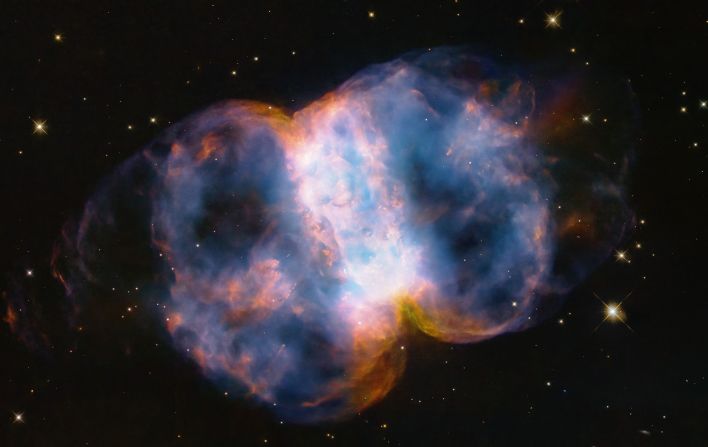Each time the Hubble Space Telescope captures an image of the largest planet in our solar system, Jupiter looks a little different. This time, Hubble’s weather report has shown new storms and updates on the Great Red Spot and its cousin.
The gas giant has an atmosphere that’s constantly in motion. Its signature bands of color are created by the planet’s atmosphere, which is dominated by hydrogen and helium.

Streaking and swirling clouds are pushed along by hurricane-force winds. Lightning can be seen illuminating the insides of storms on the planet – and their force makes lightning on Earth seem weak.
Each year, Hubble is able to capture detailed portraits of Jupiter when Earth makes its closest approach during opposition – when Jupiter is actually on the other side of Earth from the sun. It’s a near approach in astronomical terms, but nearly half a billion miles still separate the two planets during this August event.
The new Hubble images, taken on August 25, show Jupiter at 405,755,388 miles from Earth. The detail that Hubble can capture, even at this distance, acts like a revealing weather report for Jupiter.
Europa, Jupiter’s icy moon, also makes a cameo appearance in the left side of the image. Scientists think Europa contains a subsurface liquid ocean beneath an icy crust. It’s one of the “ocean worlds” in our solar system that could be potentially habitable for life.
Europa will be among the moons explored by a European Space Agency mission called JUICE, or JUpiter ICy moons Explorer, set to launch in 2022. The mission will observe Jupiter, Ganymede, Callisto and Europa.
There is a new storm visible in Jupiter’s roiling atmosphere, scientists noted. This storm, which appears as an elongated bright white spot in the mid-northern latitudes of the planet, appeared on August 18. Another has also appeared in this region, where storms are common. The new storm is moving at 348 miles per hour.
A unique feature about the new storms in this area is the fact that they have more structure than other storms. Smaller dark clumps can be seen behind the storms, which are moving counterclockwise, and these features haven’t been seen before.
It’s possible that this could be the formation of a new, persisting spot – much like the famous Great Red Spot storm in the southern hemisphere of Jupiter.
This spot, also visible in the image, is slowly shrinking over time. While scientists don’t know why, this downsizing of the storm has been occurring since astronomers began observing it and recording measurements since 1930. The storm is now 9,817 miles across – so it’s still large enough for Earth to fit inside (which is 7,917.5 miles in diameter).
Currently, the Great Red Spot is carving a counterclockwise path through the clouds, which creates bands of white and beige. The storm itself is a deeper red than before, which creates a striking contrast.
The Great Red Spot has a cousin: Red Spot Jr. (or the Oval BA). It’s just below its larger cousin. And it’s changing color again.
Red Spot Jr., astronomers have noticed, has been fading back to white over the last few years. This is the spot’s original color before it turned red in 2006. But the core of this storm is a dark red, which could suggest that Red Spot Jr. is about to be more red again in the future, like the Great Red Spot.
The new image also revealed that white clouds around the planet’s equator are being cleared out by an orange-hued hydrocarbon smog.

While Jupiter isn’t normally blue, Hubble also imaged the planet in multiple wavelengths of light, including visible, ultraviolet and near-infrared. This allows scientists to better study particles and haze on Jupiter, along with insights gained about its cloud patterns in the other image.
Hubble participates in the Outer Planet Atmospheres Legacy program, and these images of the outer planets help scientists study the giant planets and their atmospheres. In turn, this enables researchers to learn more about Earth’s atmosphere as well as those that may exist on exoplanets outside our solar system.








































